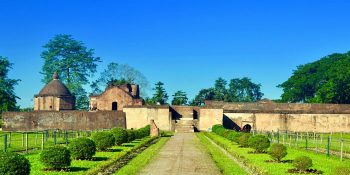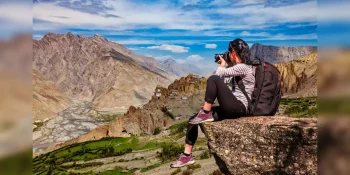The ancient temples of Hampi stand as magnificent remnants of a bygone era, a testament to the rich cultural and architectural heritage of India. Located in the southern state of Karnataka, Hampi was once the capital of the Vijayanagara Empire, one of the greatest Hindu empires in Indian history. Spread over an area of more than 25 square kilometers, Hampi’s temple complex comprises numerous structures, each bearing the imprint of exquisite craftsmanship and spiritual significance.
At the heart of this UNESCO World Heritage Site lies the Virupaksha Temple, dedicated to Lord Shiva. Dating back to the 7th century, this temple is believed to be one of the oldest functioning temples in India. Its towering gopuram (entrance tower) adorned with intricate carvings welcomes pilgrims and visitors alike into its sacred precincts. Inside, the sanctum sanctorum houses the deity of Virupaksha, while the surrounding halls and courtyards depict scenes from Hindu mythology through intricately carved pillars and murals.
Adjacent to the Virupaksha Temple is the majestic Vittala Temple, renowned for its iconic stone chariot, a symbol of the architectural brilliance of the Vijayanagara Empire. Dedicated to Lord Vishnu, this temple complex is a masterpiece of Dravidian architecture, characterized by its elaborately carved pillars, musical pillars that produce melodic tones when struck, and the intricately sculpted halls portraying mythological narratives. The highlight of the Vittala Temple is the iconic stone chariot, a symbol of Hampi’s architectural grandeur and artistic finesse.
Further exploration of Hampi reveals the awe-inspiring monolithic structures such as the monolithic statue of Lord Narasimha, a giant depiction of the half-man, half-lion incarnation of Lord Vishnu. Carved out of a single granite rock, this colossal statue stands as a testament to the sculptural prowess of the artisans of ancient Hampi.
Another notable monument is the underground Shiva Temple, locally known as the Badavi Linga. Carved out of a single rock, the lingam (symbol of Lord Shiva) housed within the temple is believed to be one of the largest in Hampi, towering at approximately three meters in height. Devotees flock to this sacred site to offer their prayers and seek blessings from Lord Shiva.
The Hampi temple complex also includes the Achyutaraya Temple, dedicated to Lord Tiruvengalanatha, a form of Lord Vishnu. Built in the 16th century, this temple is a fine example of the Vijayanagara style of architecture, characterized by its ornate pillars, intricate carvings, and towering gopurams.
Beyond its religious significance, the temples of Hampi serve as a window to the rich cultural and architectural heritage of ancient India. The intricate carvings, majestic structures, and spiritual ambiance transport visitors back in time, offering a glimpse into the grandeur of the Vijayanagara Empire.
However, the temples of Hampi also bear the scars of time and human intervention. Over the centuries, Hampi witnessed invasions, plunder, and neglect, leading to the decline of its once-thriving civilization. Despite these challenges, efforts have been made to preserve and protect this architectural marvel, ensuring that future generations can continue to marvel at its splendor.
In conclusion, the ancient temples of Hampi stand as a testament to the ingenuity and artistic prowess of ancient Indian civilization. From the towering gopurams to the intricately carved pillars, each structure narrates a story of devotion, resilience, and architectural brilliance. Hampi remains not just a heritage site but a living testament to India’s glorious past, beckoning travelers and history enthusiasts from around the world to unravel its mysteries and marvel at its splendor.









